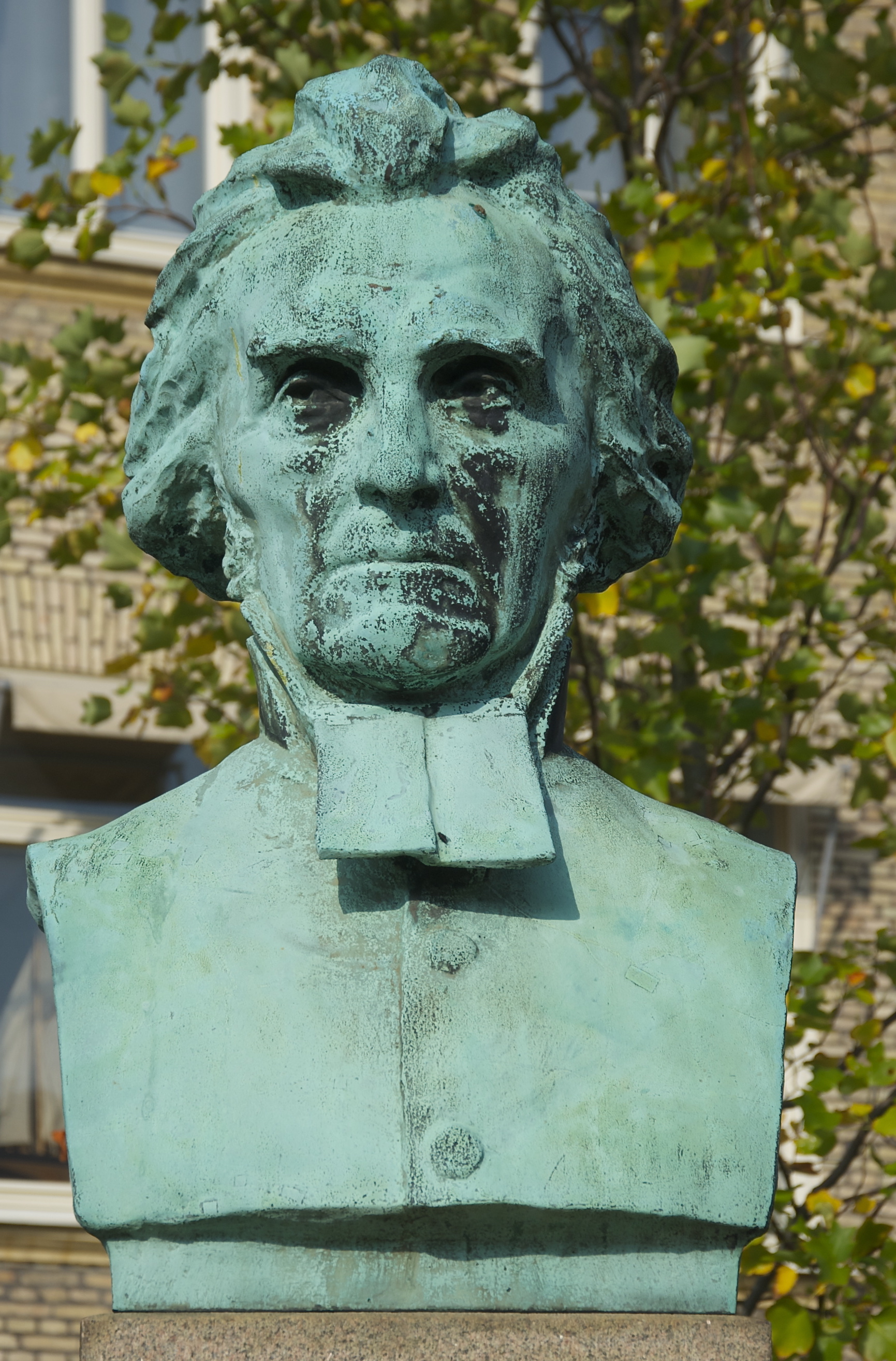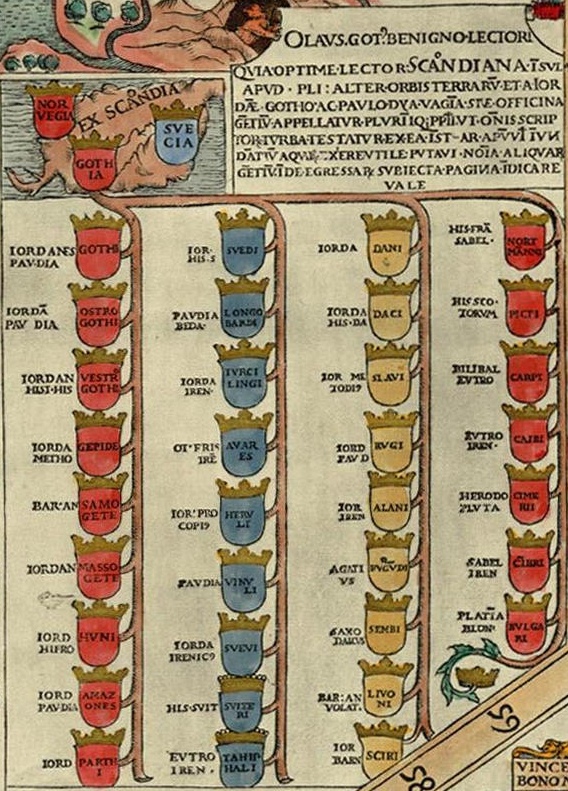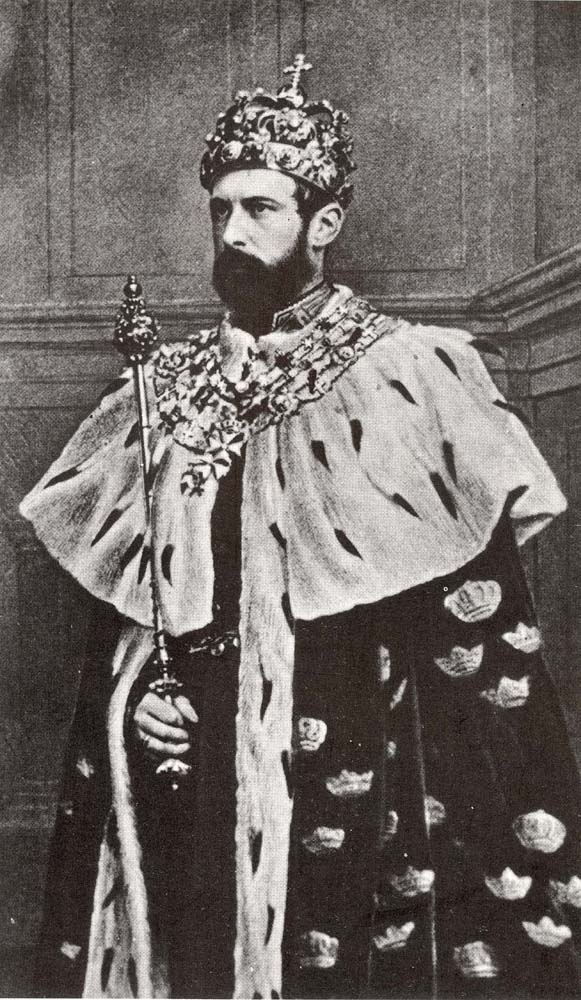|
Peter Wieselgren
Peter (Per) Wieselgren, born Jonasson (1 October 1800 – 10 October 1877) was a Lutheran priest, librarian, archivist, literary historian, and leader of the Swedish temperance movement who formed the first organised temperance society in Sweden. Biography Upbringing and education Peter Wieselgren was born 1 October 1800 in Vislanda Parish in Småland. The name Peter is said to have arisen after the priest Peter Hyltenius misheard; he should have been named Pehr. The latter name was also the one he preferred to use. When Wieselgren was to receive his first school certificate, at Växjö public school, Hyltenius wanted to give him the name Wieselman, because "we have branches and twigs before, but you will become a man". But his father and the headmaster preferred Wieselgren to be considered a family name after "...birth parish and older relatives", and on 5 September 1811 that name was entered in the books. By the age of ten, he had read through the entire Bible. He also w ... [...More Info...] [...Related Items...] OR: [Wikipedia] [Google] [Baidu] |
Order Of The Polar Star
The Royal Order of the Polar Star (Swedish: ''Kungliga Nordstjärneorden'') is a Swedish order of chivalry created by King Frederick I on 23 February 1748, together with the Order of the Sword and the Order of the Seraphim. The Order of the Polar Star was until 1975 intended as a reward for Swedish and foreign "civic merits, for devotion to duty, for science, literary, learned and useful works and for new and beneficial institutions". Its motto is, as seen on the blue enameled centre of the badge, ''Nescit Occasum'', a Latin phrase meaning "It knows no decline". This is to represent that Sweden is as constant as a never setting star. The Order's colour is black. This was chosen so that when wearing the black sash, the white, blue and golden cross would stand out and shine as the light of enlightenment from the black surface. The choice of black for the Order's ribbon may also have been inspired by the black ribbon of the French Order of St. Michael, which at the time the Ord ... [...More Info...] [...Related Items...] OR: [Wikipedia] [Google] [Baidu] |
Rydaholm
Rydaholm is a locality situated in Värnamo Municipality, Jönköping County, Sweden Sweden, formally the Kingdom of Sweden,The United Nations Group of Experts on Geographical Names states that the country's formal name is the Kingdom of SwedenUNGEGN World Geographical Names, Sweden./ref> is a Nordic country located on ... with 1,474 inhabitants in 2010. References Populated places in Jönköping County Populated places in Värnamo Municipality Finnveden {{Jönköping-geo-stub ... [...More Info...] [...Related Items...] OR: [Wikipedia] [Google] [Baidu] |
Helsingborg
Helsingborg (, , , ) is a city and the seat of Helsingborg Municipality, Scania (Skåne), Sweden. It is the second-largest city in Scania (after Malmö) and ninth-largest in Sweden, with a population of 113,816 (2020). Helsingborg is the central urban area of northwestern Scania and Sweden's closest point to Denmark: the Danish city Helsingør is clearly visible about to the west on the other side of the Øresund. The HH Ferry route across the sound has more than 70 car ferry departures from each harbour every day. Historic Helsingborg, with its many old buildings, is a scenic coastal city. The buildings are a blend of old-style stone-built churches and a 600-year-old medieval fortress (Kärnan) in the city centre, and more modern commercial buildings. The streets vary from wide avenues to small alley-ways. ''Kullagatan'', the main pedestrian shopping street in the city, was the first pedestrian shopping street in Sweden. History Helsingborg is one of the oldest cities of wh ... [...More Info...] [...Related Items...] OR: [Wikipedia] [Google] [Baidu] |
Peter Lorenz Sellergren
Peter Lorenz Sellergren (9 April 1768 – 1 May 1843) was a Swedish Lutheran priest, theologian, and ' ('old church', characterized by emphasis on the Lutheran faith and the church's orders) revivalist preacher. Biography Peter Lorenz Sellergren was born in Jönköping in 1768 to gunsmith Petter Sellegren and Anna Maria Björkander. He later changed the spelling of his name to distance himself from priest Petrus Sellegren. Sellergren's parents died when he was young. Sellergren, able to afford to study through the support of friends and family, began his studies in Lund in 1788. He supported himself through preaching and private tutoring. He was ordained a priest in 1794, and became a cathedral assistant in Växjö. In 1812 he became assistant vicar in Hälleberga in the Diocese of Växjö. He was considered to be richly talented and was highly regarded as a preacher. One well-known sermon was known for its "deep remorse and heartfelt longing for repentance." Sellergren's preac ... [...More Info...] [...Related Items...] OR: [Wikipedia] [Google] [Baidu] |
Pietism
Pietism (), also known as Pietistic Lutheranism, is a movement within Lutheranism that combines its emphasis on biblical doctrine with an emphasis on individual piety and living a holy Christian life, including a social concern for the needy and disadvantaged. It is also related to its non-Lutheran (but largely Lutheran-descended) Radical Pietism offshoot that either diversified or spread into various denominations or traditions, and has also had a contributing influence over the interdenominational Evangelical Christianity movement. Although the movement is aligned exclusively within Lutheranism, it had a tremendous impact on Protestantism worldwide, particularly in North America and Europe. Pietism originated in modern Germany in the late 17th century with the work of Philipp Spener, a Lutheran theologian whose emphasis on personal transformation through spiritual rebirth and renewal, individual devotion, and piety laid the foundations for the movement. Although Spener did not ... [...More Info...] [...Related Items...] OR: [Wikipedia] [Google] [Baidu] |
Troy
Troy ( el, Τροία and Latin: Troia, Hittite language, Hittite: 𒋫𒊒𒄿𒊭 ''Truwiša'') or Ilion ( el, Ίλιον and Latin: Ilium, Hittite language, Hittite: 𒃾𒇻𒊭 ''Wiluša'') was an ancient city located at Hisarlik in present-day Turkey, south-west of Çanakkale and about miles east of the Aegean Sea. It is known as the setting for the Greek mythology, Greek myth of the Trojan War. In Ancient Greek literature, Troy is portrayed as a powerful kingdom of the Greek Heroic Age, Heroic Age, a mythic era when monsters roamed the earth and gods interacted directly with humans. The city was said to have ruled the Troad until the Trojan War led to its complete destruction at the hands of the Greeks. The story of its destruction was one of the cornerstones of Greek mythology and literature, featuring prominently in the ''Iliad'' and the ''Odyssey'', and referenced in numerous other poems and plays. Its legacy played a large role in Greek society, with many prominent ... [...More Info...] [...Related Items...] OR: [Wikipedia] [Google] [Baidu] |
Gothicism
Gothicism or Gothism ( sv, Göticism ; la, Gothicismus) was a cultural movement in Sweden, centered on the belief in the glory of the Swedish Geats, who were identified with the Goths. The founders of the movement were Nicolaus Ragvaldi and the brothers Johannes and Olaus Magnus. The belief continued to hold power in the 17th century, when Sweden was a great power following the Thirty Years' War, but lost most of its sway in the 18th. It was renewed by the Viking revival and Romantic nationalism in the early 19th century, this time with the Vikings as heroic figures. Origins The name is derived from the Gothicists' belief that the Goths had originated from Sweden, based on Jordanes' account of a Gothic ''urheimat'' in Scandinavia (Scandza). The Gothicists took pride in the Gothic tradition that the Ostrogoths and their king Theodoric the Great, who assumed power in the Roman Empire, had Scandinavian ancestry. This pride was expressed as early as the medieval chronicles, whe ... [...More Info...] [...Related Items...] OR: [Wikipedia] [Google] [Baidu] |
Charles XV
Charles XV also Carl (''Carl Ludvig Eugen''); Swedish: ''Karl XV'' and Norwegian: ''Karl IV'' (3 May 1826 – 18 September 1872) was King of Sweden (''Charles XV'') and Norway, there often referred to as Charles IV, from 8 July 1859 until his death in 1872. Though known as King Charles XV in Sweden (and also on contemporary Norwegian coins), he was actually the ninth Swedish king by that name, as his predecessor Charles IX (reigned 1604–1611) had adopted a numeral according to a fictitious history of Sweden. Charles XV was the third Swedish monarch from the House of Bernadotte and the first one to be born in Sweden. Biography Early life He was born in Stockholm Palace, Stockholm, in 1826 and dubbed Duke of Scania at birth. Born the eldest son of Crown Prince Oscar of Sweden and his wife Crown Princess Josephine, he would be second in line to the throne of his grandfather, the ruling King Charles XIV John of Sweden. During his childhood he was placed in the care of th ... [...More Info...] [...Related Items...] OR: [Wikipedia] [Google] [Baidu] |
Western Main Line
The Western Main Line ( sv, Västra stambanan) is the main state-owned railway line between Stockholm and Gothenburg in Sweden. Its construction began in 1856 and it opened for service in 1862. . Retrieved 2019-03-02. Maintained by the , the Western Main Line is and consists entirely of |
Fermented Beverage
This is a list of fermented foods, which are foods produced or preserved by the action of microorganisms. In this context, fermentation typically refers to the fermentation of sugar to alcohol using yeast, but other fermentation processes involve the use of bacteria such as lactobacillus, including the making of foods such as yogurt and sauerkraut. Many fermented foods are mass produced using industrial fermentation processes. The science of fermentation is known as zymology. Many pickled or soured foods are fermented as part of the pickling or souring process, but many are simply processed with brine, vinegar, or another acid such as lemon juice. __TOC__ Fermented foods Fermented beans and seeds Fermented cheeses Most cheeses (all but fresh cheeses) are fermented as part of their production. Fermented condiments Fermented creams and yogurts Fermented grains and grain-based foods Fermented fruits and vegetables Fermented meat and seafood ... [...More Info...] [...Related Items...] OR: [Wikipedia] [Google] [Baidu] |
Robert Baird (clergyman)
Robert Baird (October 6, 1798 – March 15, 1863) was an American clergyman and author. He was born in Fayette County, Pennsylvania, near Pittsburgh, and graduated at Jefferson College in 1818 and at Princeton Theological Seminary in 1822. He taught at an academy at Princeton, New Jersey for five years while tutoring at the College of New Jersey and preaching occasionally. (In 1824, he helped to create the Chi Phi Society, a semi-religious, semi-literary organization, which ceased activity the following year when it merged with the Philadelphian Society.) In 1827 Baird became a New Jersey agent for the American Bible Society, distributing Bibles among the poor and laboring among destitute Presbyterian churches. His survey of educational deficiencies eventually led to the introduction of a system of public education in New Jersey. In 1829 Baird became an agent for the American Sunday School Union and traveled extensively for the society. In 1835 he went to Europe, where he rema ... [...More Info...] [...Related Items...] OR: [Wikipedia] [Google] [Baidu] |
Nordisk Familjebok
''Nordisk familjebok'' (, "Nordic Family Book") is a Swedish encyclopedia that was published in print from between 1876 and 1993, and that is now fully available in digital form via Project Runeberg at Linköping University. Despite their considerable age and relative obsolescence, the public domain editions of the encyclopedia remain important reference works in Finland, especially on Finnish Wikipedia. History First edition ''Nordisk familjebok'' began when Halmstad publisher hired an editor, linguist , in 1874 to publish a six-volume encyclopedia. Linder drew up a plan for the work, designed the editorial team and created a large circle of experts and literary figures, who submitted article proposals and wrote and reviewed them. Under Linder's direction, the articles were then edited to make them as formal, consistent and accurate as possible. Much attention was paid to Nordic subjects, mainly Swedish and Finnish, where sources and models were often lacking, so extensive ... [...More Info...] [...Related Items...] OR: [Wikipedia] [Google] [Baidu] |






